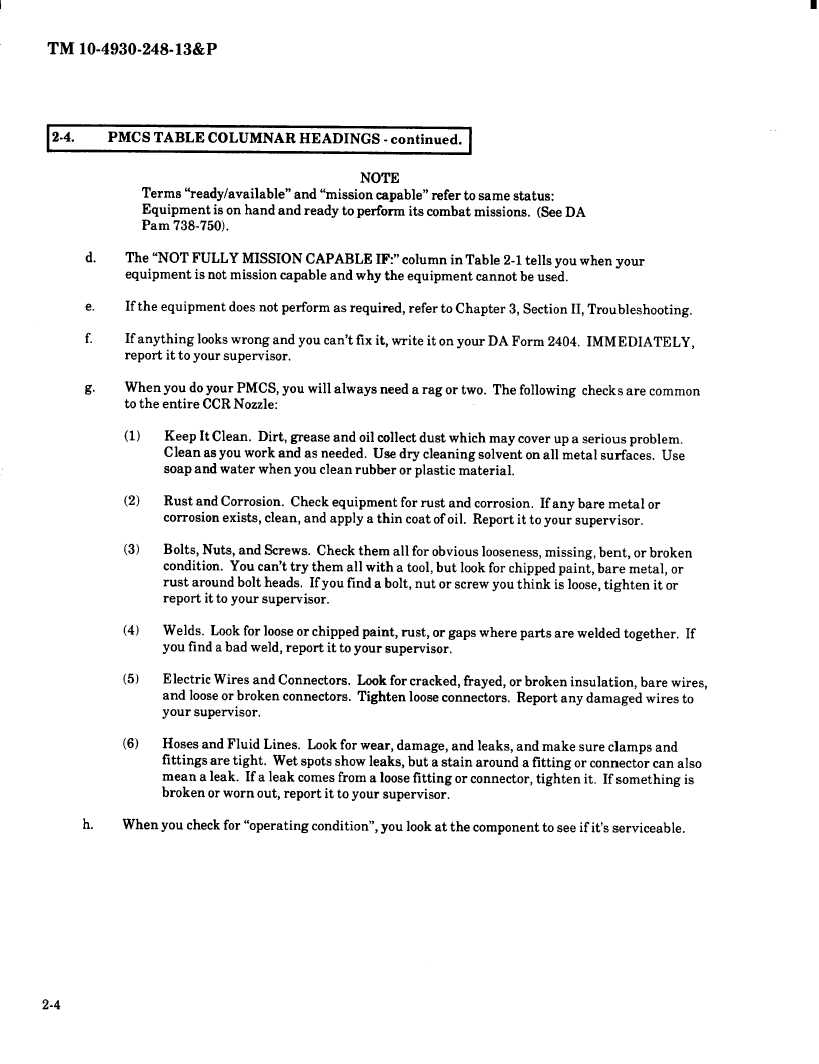|
| |
TM 10-4930-248-13&P
2-4.
PMCS
TABLE
COLUMNAR
HEADINGS
- continued.
NOTE
Terms "ready/available"
and"mission
capable" refer to same status:
Equipment is on hand and ready to perform its combat missions. (See DA
Pam 738-750).
d.
The "NOT FULLY MISSION CAPABLE IF:" column in Table 2-1 tells you when your
equipment is not mission capable and why the equipment cannot be used.
e.
If the equipment does not perform as required, refer to Chapter 3, Section II, Troubleshooting.
f.
If anything looks wrong and you can't fix it, write it on your DA Form 2404. IMMEDIATELY,
report it to your supervisor.
9.
When you do your PMCS, you will always need a rag or two. The following checks are common
to the entire CCR Nozzle:
(1)
Keep It Clean. Dirt, grease and oil collect dust which may cover up a serious problem.
Clean as you work and as needed. Use dry cleaning solvent on all metal surfaces.
Use
soap and water when you clean rubber or plastic material.
(2)
Rust and Corrosion.
Check equipment for rust and corrosion. If any bare metal or
corrosion exists, clean, and apply a thin coat of oil. Report it to your supervisor.
(3)
Bolts, Nuts, and Screws. Check them all for obvious looseness, missing, bent, or broken
condition.
You can't try them all with a tool, but look for chipped paint, bare metal, or
rust around bolt heads. If you find a bolt, nut or screw you think is loose, tighten it or
report it to your supervisor.
(4)
Welds. Look for loose or chipped paint, rust, or gaps where parts are welded together.
If
you find a bad weld, report it to your supervisor.
(5)
Electric Wires and Connectors.
Look for cracked, frayed, or broken insulation,
bare wires,
and loose or broken connectors.
Tighten loose connectors.
Report any damaged wires to
your supervisor.
(6)
Hoses and Fluid Lines. Look for wear, damage, and leaks, and make sure clamps and
fittings are tight. Wet spots show leaks, but a stain around a fitting or connector can also
mean a leak. If a leak comes from a loose fitting or connector, tighten it. If something
is
broken or worn out, report it to your supervisor.
h.
When you check for "operating
condition", you look at the component to see if it's serviceable.
2-4
|

